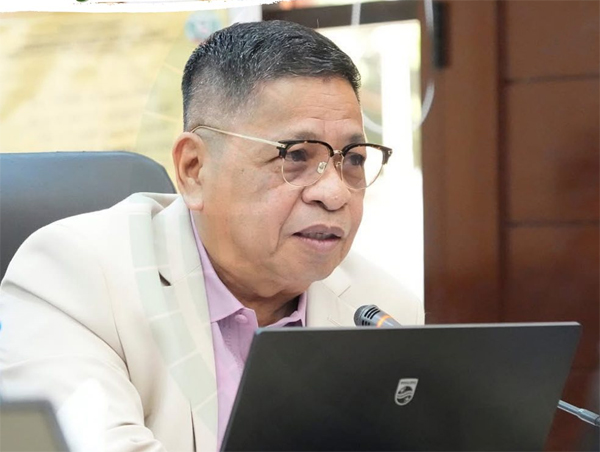New local government units will bring back to life the historic Moro Province though in a much smaller geographic configuration of newly-created municipalities, Bangsamoro member of parliament Mohammad Kelie Antao said on Wednesday.
Antao said calling the geographical units “Moro Province” is the sentimental will of Moro Islamic Liberation Front (MILF) chairman Hadji Murad Ebrahim.
Antao said all is set for the creation of a Moro Province by both Houses of Congress when its proposed charter was filed by party-list Rep. Democrito Mendoza as House Bill 11177, and by Senator Robin Padilla as Senate Bill 2876.
The new Moro Province will be made up of the eight municipalities created last year by the Parliament of the Bangsamoro Transition Authority (BTA). These are Pahamuddin, Kadayangan, Nabalawag, Old Kaabakan, Kapalawan, Malidegao, Tugunan, and Ligawasan which are made up of the 63 villages that opted to join the Bangsamoro Autonomous Region in Muslim Mindanao (BARMM) in a plebiscite held in February 2020.
Antao’s BTA Office has endeavored on comparative data profiling where it was found that in terms of annual income, these new local government units have aggregate yearly revenues of P282,609,928.44 which is higher than Dinagat Island’s P 82,895,433.25in reference to the minimum annual income level P 20 million required under RA 7160 (Local Government Code).
In terms of population, the municipal components of the proposed Moro Province have a combined population of 215,433 which falls short by 14,567 from the LGC requirement of 250,000–but which is higher still than Dinagat’s 106,951 and Biliran Province which has a population of 118,012 inhabitants.
In terms of area in square-kilometers (sq.m.), the proposed Moro Province sits on 814.76 sq.m., short of the law’s requirement of 2,000 sq.m., but is wider than both Dinagat
Island’s 802.12 sq.m. and Biliran Province’s 536.01 sq.m. In terms of geographic contiguity, all three are described as being “partly contigious.” “Senator Robin Padilla was here together with one of our best bets for the Senate, Samira Gutoc.
They willingly accepted the proposal and they committed to help fast-track the passage of the Bills,” Antao said.
Antao said some members of the Bangsamoro Parliament argued that a Moro Province would have best represented its old historic geographic coverage, comprising of Cotabato, Undivided Lanao, Sulu Archipelago (including Basilan, Tawi-Tawi), and even Davao.
Through the Philippine Commission (the extension of the U.S. Congress in the Philippine Islands), the U.S. colonial administration in 1900 created the first Moro Province with that district composition. The historic Moro Province was replaced by the Department of Mindanao and Sulu in 1914 and by the Philippine Commonwealth in 1935.
“I pointed out that only on paper do we have a Moro Province. It’s always good to resurrect what we have lost to colonial marginalization, if only to go by the sentimental will of the people,” Antao told reporters.
Antao said the plan to create a new “Moro Province” started years ago with a vision floated in some discussion with his former colleagues in the Cotabato Provincial Board, to expand the autonomous region over to villages close to Maguindanao.
He said the opportunity came along with the campaign for the ratification of the Bangsamoro Organic Law (RA 11054) which sought to expand the then five- province Autonomous Region in Muslim Mindanao (ARMM) under a new setup that is, the Bangsamoro Autonomous Region in Muslim Mindanao (BARMM).
“This time, I said, let us look for the smallest provinces as a model to create a province, and we saw Dinagat Island and Biliran Province, whose representative congressman committed to help fast-track a Moro Province Bill in the Lower House,” Antao said.
He also said passing a resolution on the part of the Bangsamoro Parliament would be an added factor as it urged both chambers of Congress to prioritize the passage of the law.
“At the House, it’s already at the level of the Committee on Local Governments,” Antao said, adding that as much the same legislative development was expected to be heard soon from the Senate.
“If there is a resolution coming from the Parliament, legislators in Congress would be reminded more often to re-file the Bills in the next Congress, even when its current term ends.” Antao pointed out.







